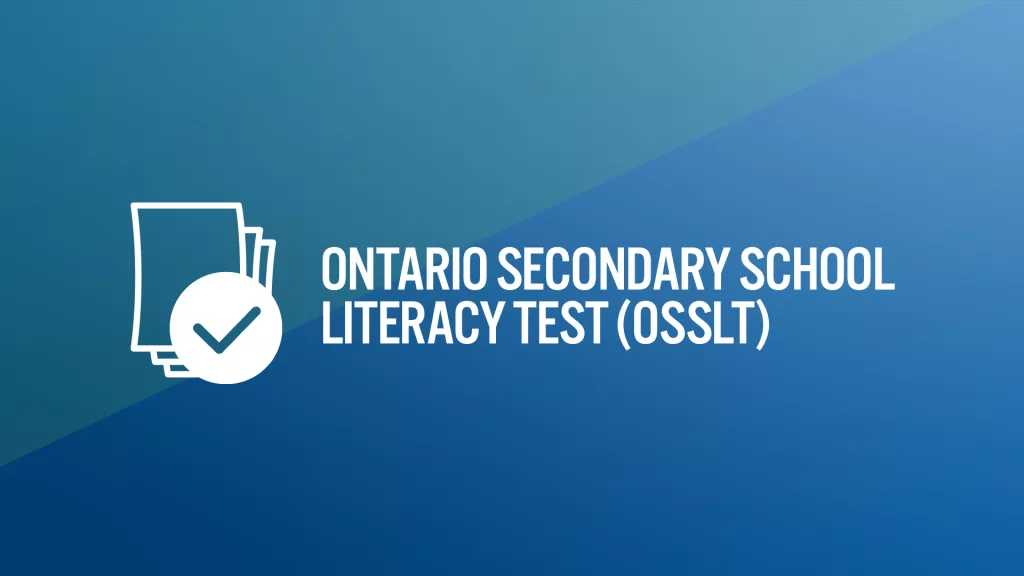The Ontario Secondary School Literacy Test (OSSLT) is a significant milestone in the educational journey of high school students in Ontario, Canada. It is a standardized test that assesses students’ reading and writing skills, and successful completion is a requirement for obtaining an Ontario Secondary School Diploma (OSSD). Preparing for the OSSLT is crucial to ensure you meet this graduation requirement and showcase your literacy proficiency. In this article, we will explore essential strategies and tips to help you prepare for the OSSLT effectively.
How to Prepare for the Ontario Secondary School Literacy Test (OSSLT)
Table of Contents
Understanding the OSSLT
Before diving into preparation strategies, it’s important to have a clear understanding of what the OSSLT entails. The OSSLT is typically administered in March of Grade 10, but students have multiple opportunities to retake it if necessary. The test consists of two main components:
- Reading Comprehension: This section assesses your ability to understand and analyze various types of texts, such as newspaper articles, reports, and narratives. You’ll be required to answer multiple-choice questions, short-answer questions, and complete a series of open-response questions based on the provided texts.
- Writing Skills: In this section, you’ll need to demonstrate your writing skills by composing a series of written responses. This includes writing a news report, a series of paragraphs, and an essay based on a provided prompt.
Preparing for the OSSLT: Essential Strategies
Now that you have a clear understanding of the OSSLT, let’s explore some essential strategies for effective preparation:
1. Start Early
Effective preparation for the OSSLT begins well before the test date. It’s advisable to start building your reading and writing skills from the early years of high school. Reading a variety of texts, both for school and personal enjoyment, can enhance your reading comprehension skills. Likewise, practicing writing essays and reports will help you become a more proficient writer.
2. Take Advantage of School Resources
Your school will likely offer resources and support to help you prepare for the OSSLT. These may include practice tests, study guides, and workshops. Be sure to take advantage of these resources, as they are specifically tailored to the test format and expectations.
3. Practice Reading Comprehension
To excel in the reading comprehension section, practice is key. Read a wide range of texts, including newspapers, magazines, academic articles, and fiction. Pay attention to the author’s main ideas, supporting details, and any persuasive techniques used. Practice summarizing texts, identifying the central themes, and drawing inferences. This will help you become a more critical and analytical reader.
4. Enhance Your Writing Skills
Improving your writing skills is crucial for the writing skills section of the OSSLT. Work on your ability to write clearly, concisely, and coherently. Focus on organizing your ideas logically and providing adequate support for your arguments. It’s also essential to be aware of the conventions of standard written English, including grammar, punctuation, and spelling.
5. Review Sample Questions
Familiarize yourself with the types of questions and tasks you’ll encounter on the OSSLT by reviewing sample questions and previous test papers. This will give you a sense of the test format and the expectations for each section. You can find official OSSLT sample questions and practice materials on the Education Quality and Accountability Office (EQAO) website.
6. Time Management
Time management is a critical aspect of test preparation. The OSSLT has a time limit, so practice working within these constraints. Learn to allocate your time effectively for each section, and be mindful of the clock during the actual test. Consider using a timer during your practice sessions to simulate test conditions.
7. Work on Writing Prompts
The OSSLT includes writing prompts that require you to compose essays and reports. Practice writing on a variety of topics and prompts to hone your skills. Focus on structuring your responses with a clear introduction, body paragraphs, and a conclusion. Be sure to provide examples and evidence to support your arguments.
8. Peer Review and Feedback
Seek feedback on your writing from teachers, peers, or tutors. Constructive feedback can help you identify areas for improvement and refine your writing. Additionally, reviewing and critiquing the work of others can enhance your own understanding of effective writing techniques.
9. Stay Informed
The OSSLT often includes texts related to current events and social issues. Stay informed about current news, as this knowledge can be valuable in both the reading comprehension and writing skills sections. Reading newspapers, magazines, and online news sources can help you become more aware of current events.
On the Day of the OSSLT
As the test day approaches, there are specific steps you can take to ensure a smooth and successful experience:
1. Get a Good Night’s Sleep
A well-rested mind performs better. Ensure you get a full night’s sleep before the test day to be alert and focused during the examination.
2. Eat a Healthy Breakfast
Fuel your body and brain with a nutritious breakfast on the morning of the test. This will help sustain your energy throughout the testing period.
3. Arrive Early
Arrive at the test center with ample time to spare. Rushing to the test can increase stress and anxiety, which can negatively impact your performance.
4. Follow Instructions Carefully
During the test, carefully read and follow the instructions provided in the test booklet. Ensure that you understand the format of each section and the specific requirements for responses.
5. Manage Your Time
Divide your time wisely between the reading comprehension and writing skills sections. It’s essential to pace yourself to complete all the tasks within the allotted time.
After the OSSLT
Once the OSSLT is complete, there are still important steps to take:
1. Reflect on Your Performance
Take some time to reflect on your performance. Identify your strengths and areas that may need improvement. This self-assessment can guide your ongoing literacy development.
2. Review Your Score
After the test, you will receive your OSSLT score. If you didn’t achieve a passing grade, don’t be discouraged. You have opportunities to retake the test in the following school years. Use your initial experience as a learning opportunity to improve your skills.
3. Seek Additional Support
If you struggled with the OSSLT or received a score below the passing grade, consider seeking additional support. Talk to your teachers or guidance counselors about resources or strategies to enhance your literacy skills.
Conclusion
Preparing for the Ontario Secondary School Literacy Test (OSSLT) requires dedication, practice, and a thorough understanding of the test format. By following the strategies and tips outlined in this article, you can maximize your readiness and increase your chances of success on test day. Remember that the OSSLT is not only a graduation requirement but also an opportunity to showcase your literacy skills, which are invaluable for future academic and professional endeavors. Stay focused, practice consistently, and approach the OSSLT with confidence.
Go to https://ontarioliteracy.ca/osslt-practice-tests to take the OSSLT now



